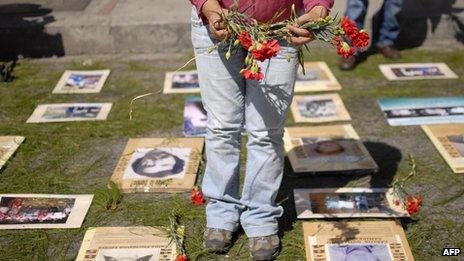'A way of healing': Art and memory in Latin America
- Published
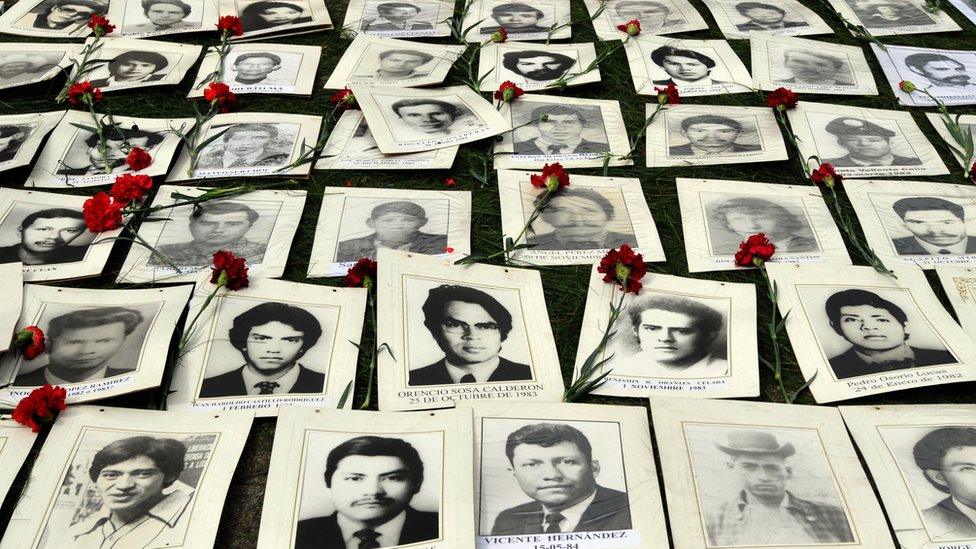
The years of military rule in Chile, when thousands of people were killed or disappeared, have left deep scars
More than 20 years have passed since the civil war ended in Guatemala and Chile returned to democracy, but the impact of extreme state violence is still keenly felt.
As part of a BBC radio series on protest art in Latin America, Louise Morris travelled to both countries and asked if there was a role for art both to demand justice and collectively memorialise those lost.
A woman sits centre stage reading aloud.
At regular intervals a dentist enters and injects her mouth with a shot of anaesthetic.
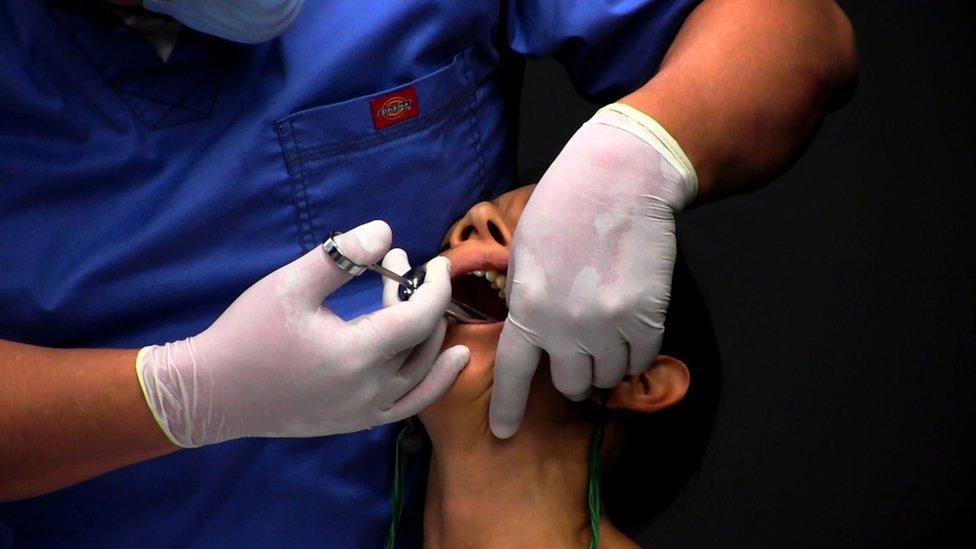
In her performance The Truth, Regina Galindo wants to show that the victims will not be silenced
Over the course of the 70-minute performance, her speech becomes increasingly muffled but her words never cease.
This is The Truth, a piece by Guatemalan performance artist Regina José Galindo.
She is reading testimonies from the indigenous Maya people who suffered massacre, torture and rape at the hands of the Guatemalan military during the Central American country's 36-year civil war.
Victims' testimonies
Many of these witness statements by Maya Ixil women have been taken from the April 2013 trial on genocide charges of Guatemala's former president, Gen Efraín Ríos Montt.

Guatemala's civil war 1960-1996
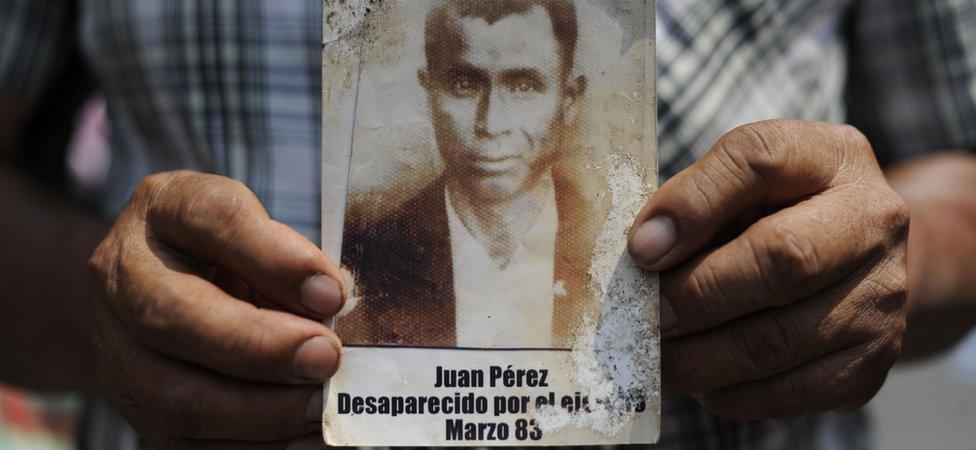
The conflict pitted left-wing, mostly Mayan insurgents against the state
The Guatemalan government, backed by the US, waged a vicious campaign to eliminate the guerrillas
More than 200,000 people, most of them civilians, were killed or disappeared

Gen Ríos Montt was convicted of genocide and war crimes but the sentence was later overturned. A second genocide trial is currently under way.
Watch: Child survivor holds truth about Guatemalan massacre
Ms Galindo says about her performance: "My body was holding on to demonstrate what I had learned about the strength of these women ... [how] they continued with all the force of the world."
Her work packs a visceral punch, embodying the difficulty and determination of speaking out in the face of injustice as well as becoming a homage to the memories of those affected.
Ms Galindo is one of many people in Latin America harnessing art's emotive power to question histories of state violence and impunity, and to find a way to commemorate its victims.
Polarising memories
At the opposite end of Latin America, Chile is engaged in similar battles for reclaiming contested memories.
Gen Augusto Pinochet's 1973 coup ushered in years of terror during which dissidents were tortured and murdered.
Gen Pinochet stepped down in 1990 and never stood trial. He died in 2006.
The Guatemalan and Chilean dictatorships divided their populations, partly evidenced by the difficulties in prosecuting perpetrators.
Read: Chile still split over Pinochet legacy
Many people prefer to forget rather than keep confronting the past.
In these contexts, memorialisation is a complex and heightened challenge, where the difficulties of representation and how to collectively memorialise highly personal experiences of state violence are constantly renegotiated.
Amanda Jara is the daughter of Chilean political singer-songwriter Victor Jara, one of the first victims of the coup in Chile.
For her, opening a space to commemorate her father has been a lengthy struggle.
"We're trying to open the Chile Stadium, now called the Victor Jara Stadium, as a memorial site but it's very difficult, we've come across many obstacles," she says.

The stadium has been named after Victor Jara but his daughter would like it to become a memorial site
The stadium was occupied by the armed forces and became the first detention centre after the coup. It was where Victor Jara was tortured and killed.
The stadium was closed for cultural events in 2009 but recently Ms Jara has had some success with the stadium being temporarily opened for four concerts this September.
She would like it to become a permanent space for "living memory", a space which combines testimonies and live art to connect the past with the present.
'Expressing who we are'
Back in Guatemala, this creative commitment to memory is also being practiced by all-female Maya theatre group Mujeres Ajchowen.
"I think art is the best way to transform a society," the group's founder, Clara Alicia Sen Sipac, says.
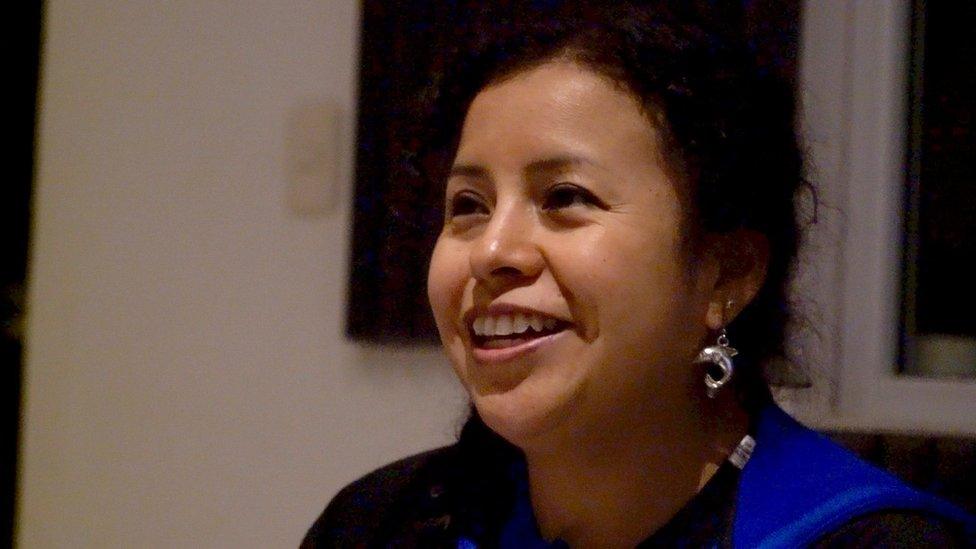
Clara Alicia Sen Sipac is the founder of the all-female Maya theatre group Mujeres Ajchowen
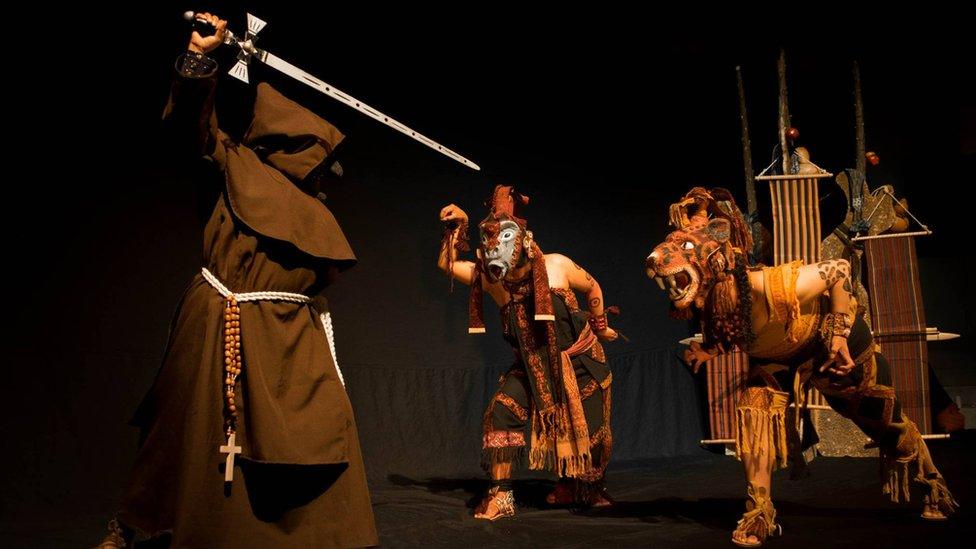
The plays explore traditional Mayan themes...

...but often carry a contemporary message
Their plays centre around traditional Maya stories but incorporate messages about the social and political struggles of indigenous women.
During the conflict, Maya culture was threatened and some songs and weaving styles were lost when entire villages were massacred.
"Now we are rescuing our practices," she says.
Ms Sen Sipac says that the emergence of theatre groups like Mujeres Ajchowen has been key as "a way of healing and expressing who we are" after the peace accords were signed in 1996.
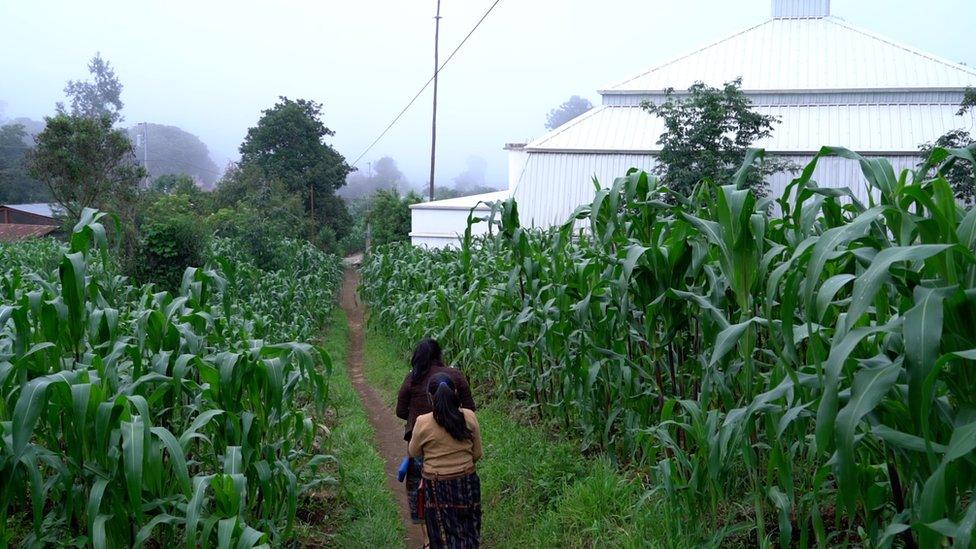
Mujeres Ajchowen are based at the Centro Cultural Sotz'il Jay which focuses on Mayan culture
"Despite everything that's happened, we are here and more alive and looking forward to continuing fighting and re-vindicating our culture," Ms Sen Sipac says.
Art is being used as an engaging and vital conduit to revisit memory and interrogate unresolved pasts in the post-conflict landscapes of Guatemala and Chile.
Through art collective memory can live on.
However, despite its power, art remains a rough balm when perpetrators remain untried and the disappeared are yet to be found.
You can listen to the first episode in Louise Morris' three-part series on protest art in Latin America on A Call To Art broadcast on BBC Radio 4 at 11:30GMT on Tuesday or anytime after that via this link.
- Published6 September 2013
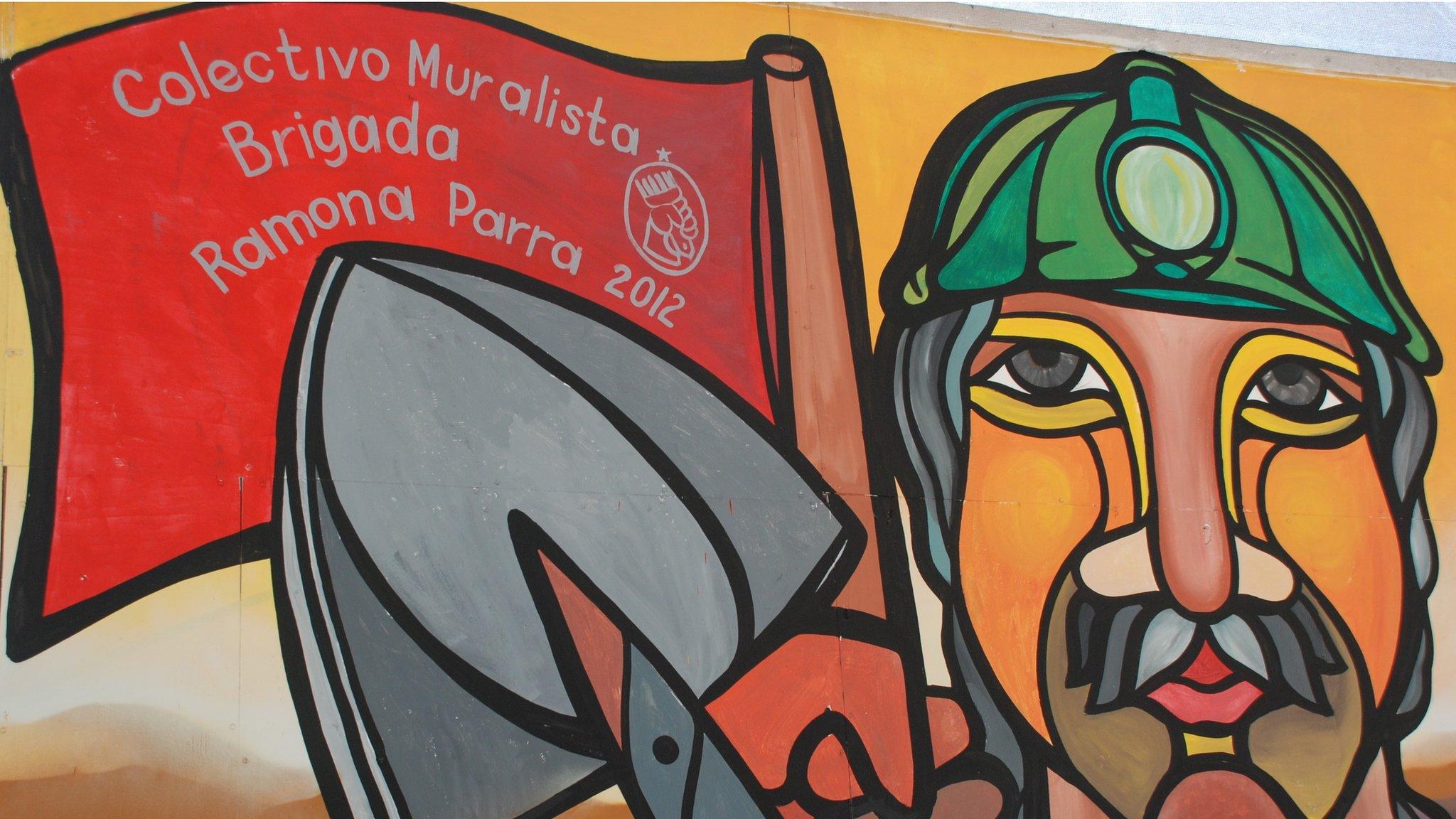
- Published13 January 2015
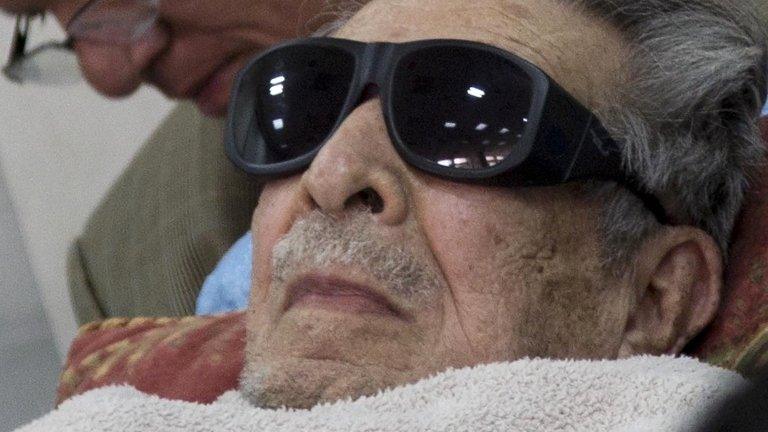
- Published21 May 2013

- Published13 March 2012
